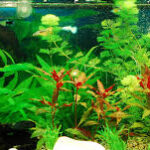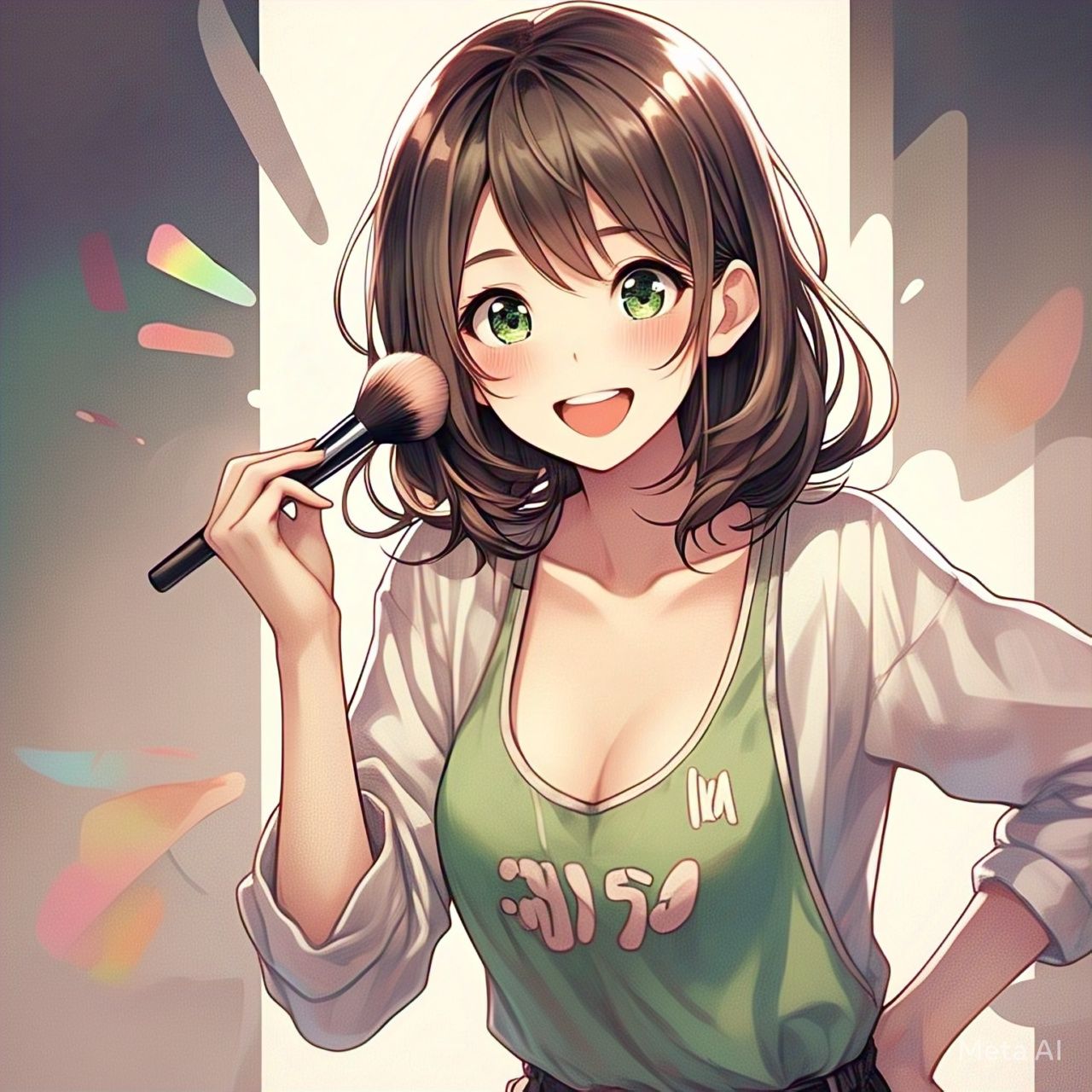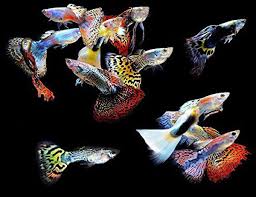Understanding the Power of Contrast and Harmony
When it comes to enhancing natural beauty through makeup, understanding the relationship between hair color, eye color, and skin tone is essential. For those with brown hair and green eyes, the combination creates a striking contrast that can be subtly enhanced or dramatically amplified, depending on the desired effect. This article begins a four-part series focused on guiding individuals with this particular combination to make the most of their features through the art of makeup. In this first section, the foundation is laid by exploring how color theory and contrast can be used to create a harmonious and appealing makeup look that enhances green eyes and complements brown hair.
Recognizing the Unique Beauty of Green Eyes
Green eyes are one of the rarest eye colors in the world, which makes them instantly captivating. Their uniqueness lies in the way they can shift in shade depending on lighting, surrounding colors, and even the mood of the person. Green eyes may contain flecks of gold, brown, or gray, making them versatile when it comes to color pairing in makeup. Understanding the nature of green eyes is important when selecting makeup, as the wrong shade can dull their natural sparkle, while the right one can intensify their brilliance.
Identifying the Role of Brown Hair in Makeup Coordination
Brown hair offers a broad spectrum of tones ranging from soft ash browns to rich chocolate and espresso hues. The natural warmth or coolness of brown hair plays a role in deciding what makeup tones will harmonize best with the overall appearance. Warmer browns may benefit from golden or peachy tones, while cooler browns can work well with rose or mauve undertones. Identifying the undertone of brown hair can help guide color selection across eyeshadow, blush, lipstick, and even highlighter.
Color Theory Basics for Makeup Selection
Understanding the color wheel helps in choosing makeup that enhances green eyes. Complementary colors are located opposite each other on the color wheel. For green, the complementary color is red, which includes a range of shades from pink to burgundy. Incorporating these tones into eye makeup can intensify green eyes. Analogous colors, which sit next to green on the color wheel such as yellow and blue-green, offer a more subtle enhancement. Knowing how to balance complementary and analogous colors creates more dimension in the overall look.
Finding Harmony Between Hair, Eyes, and Skin Tone
While the focus remains on brown hair and green eyes, skin tone cannot be ignored. A warm skin tone may call for makeup in earthy tones like bronze, copper, and coral. Cooler skin tones can be complemented with plum, rose, and silvery hues. Neutral skin tones can typically wear a wider range of shades. Matching all three elements—hair, eyes, and skin—ensures a cohesive and flattering makeup result that looks natural and intentional.
Foundation Choices for a Flawless Canvas
A good makeup look begins with a clean, smooth base. Choosing the right foundation means considering skin tone, undertone, and skin type. The foundation should seamlessly blend into the skin, offering coverage without masking the natural complexion. For individuals with green eyes and brown hair, it is especially important to avoid overly yellow or pink foundations that can throw off the balance. Opting for a neutral base can help maintain harmony and allow eye and lip makeup to stand out without competing with the skin.
Blush and Contour for Definition and Warmth
Blush adds a healthy glow while contouring provides definition to facial features. For those with brown hair, warmer blush tones such as peach and soft apricot can bring out the richness of the hair. These tones also subtly reflect the green in the eyes, enhancing their depth. When contouring, shades should be selected based on the natural shadow tone of the skin. Avoid shades that are too gray or too orange, as they can make the look appear harsh or unnatural.
Selecting the Right Brow Products
Eyebrows frame the face and contribute significantly to the overall balance of a makeup look. With brown hair, choosing a brow color that is close to the natural hair shade is essential. A slightly lighter shade can soften the appearance, while a darker one can create a bold, defined brow. It is important to avoid tones that are too warm or too cool, as mismatched brows can detract from the harmony of the rest of the face. Using pencils or powders with neutral undertones often provides the most natural effect.
Laying the Groundwork for Eye Makeup
Before diving into eyeshadow application, preparing the eye area with primer ensures that the pigments adhere better and last longer. Eye primers also help prevent creasing and keep colors true throughout the day. With green eyes, even the primer color can have an effect. A neutral-toned primer allows the true color of shadows to shine, while a slightly tinted one can help intensify colors.
Eye Makeup Techniques That Make Green Eyes Pop
Eyes are often described as the window to the soul, and when those eyes are green, they naturally draw attention. However, even the most striking green eyes can benefit from techniques that enhance their color and shape. For individuals with brown hair, this enhancement becomes an art of balancing warmth and depth to create a harmonious visual statement. Part Two of this series explores in detail the eye makeup techniques that bring out the vividness of green eyes, ensuring they remain the focal point of any look while staying in sync with the tones of brown hair and the surrounding complexion.
Building the Perfect Base for Eye Makeup
Every strong makeup look begins with a good foundation, and that holds especially true for eye makeup. The eyelid must be prepped properly to ensure that pigments adhere well and remain vibrant throughout the day. A dedicated eye primer is essential for preventing creasing and allowing shadows to glide smoothly. Those with green eyes may find that neutral or slightly warm-toned primers help bring out the green without distorting the shadow colors layered above. The use of concealer on the eyelid can also help even out discoloration, creating a uniform canvas that enhances color payoff.
Choosing Eyeshadow Colors That Complement Green Eyes
Green eyes sit opposite red on the color wheel, meaning that any shade containing red or red undertones will intensify their brightness. Warm purples, deep burgundies, reddish browns, and rose golds are all excellent choices for making green eyes appear more vivid. Earthy tones such as copper, rust, and bronze bring out the golden flecks often found in green eyes, while also harmonizing with brown hair.
Cool-toned greens such as emerald or olive can create a monochromatic look that deepens eye color without overwhelming it. However, caution should be taken to avoid shades that are too similar to the natural eye color, as they can sometimes make the eyes appear dull. Instead, subtle contrasts work best to create visual interest while maintaining harmony.
Layering Shadows for Depth and Dimension
Creating depth around the eyes is not just about selecting the right colors, but also about applying them strategically. A transition shade, typically a warm mid-tone brown or mauve, helps blend the crease and prevent harsh lines. This acts as a bridge between the lid color and brow bone highlight. The main lid color should be chosen based on the desired effect—shimmery tones for a more luminous look or matte tones for a softer, more natural appearance.
The outer corner of the eye benefits from deeper shades such as charcoal, espresso, or plum, applied in a V-shape to elongate the eye and provide definition. The crease can be subtly deepened using a slightly darker matte tone, which adds shadow and enhances the eye’s natural shape. The brow bone and inner corner highlight, typically in champagne or soft gold, provide contrast and make the eyes appear more open and awake.
Using Eyeliner to Define and Enhance
Eyeliner is a powerful tool for shaping the eye and adding drama. For green eyes, eyeliners in warm browns, bronze, plum, and even dark green can create a soft yet defined look that complements the eye color. Traditional black liner, while classic, can sometimes overpower the delicate green tones, especially if applied too heavily.
For a subtle enhancement, a brown or bronze pencil along the upper lash line adds definition without harshness. Those who prefer a more dramatic effect might experiment with a smudged eyeliner look using plum or burgundy to draw out the red undertones that complement green. The lower lash line can also be softly lined with similar tones, smudged with a small brush to avoid starkness.
The waterline offers another opportunity for enhancement. A nude or peach-toned pencil on the lower waterline brightens the eyes, while a deep plum or olive liner on the upper waterline can subtly intensify the eye color without overwhelming it.
Mascara Choices That Elevate the Look
Mascara is the final step in completing eye makeup, and the choice of color and formula can affect the overall impact. Black mascara remains a staple for most people, but for green eyes, a brown-black or deep plum mascara can enhance the eye color in a more complementary way. These softer tones avoid the sometimes harsh contrast of jet black while still providing the volume and definition needed to frame the eyes.
Lengthening formulas help draw attention upward, opening the eye and emphasizing the lash line, while volumizing mascaras add drama and intensity. Curling the lashes before applying mascara can further lift the eyes, giving a more youthful and alert appearance.
Shaping and Highlighting the Eyebrow Area
Though often overlooked, the area around the eyes—particularly the brows—plays a crucial role in framing and completing the eye makeup look. For those with brown hair, brows should remain within the same tonal family for consistency. A brow pencil or powder that matches the natural hair color or is one shade lighter can add structure without looking harsh.
Highlighting beneath the brow arch with a light, shimmery or satin shadow adds lift and draws attention to the eyes. This detail helps tie together the entire look, emphasizing the brows while maintaining balance with the lid and crease colors.
Special Occasion Looks Versus Everyday Styles
The intensity of eye makeup can vary depending on the occasion. For everyday wear, a neutral palette of soft browns, peach tones, and subtle plums can create a fresh, natural appearance. The focus here is on enhancing the eyes without making them the sole point of attention. Minimal liner, a single coat of mascara, and a gentle shimmer on the lid can suffice for a daytime look that flatters green eyes and brown hair.
For evening or special events, more dramatic combinations can be explored. Smokey eyes in deep forest green, eggplant, or warm chocolate can add depth and allure. The use of glitter or metallic pigments, carefully placed on the center of the lid or inner corner, adds dimension and catches the light in a way that emphasizes the eye color. False lashes or multiple layers of volumizing mascara can be introduced to enhance the look even further.
Keeping Eye Makeup Long-Lasting and Smudge-Free
No eye look is complete without attention to longevity. Eyeshadows and liners should be set properly to resist smudging or fading throughout the day. Setting sprays and finishing powders around the eye area can lock in the look, while oil-absorbing products prevent creasing and unwanted shine. Waterproof mascara and long-wearing liners are especially useful for special occasions or long days, ensuring that the green-eyed glam remains intact.
Balancing the Look with Lip and Cheek Colors
The artistry of makeup lies not only in emphasizing a single feature but in orchestrating harmony across the entire face. Once the eyes have been properly enhanced to highlight their green radiance, the next step is to ensure that the rest of the face complements this focal point. Lip and cheek color play vital roles in creating that balance. They can either support the eyes with subtlety or add contrast for boldness, depending on the desired effect. In Part Three of this guide, the focus shifts to the lips and cheeks—two elements that can transform an already beautiful look into a cohesive statement of elegance and individuality.
Understanding the Role of Skin Tone in Color Selection
Before diving into specific shades, it is essential to understand how skin tone influences the effectiveness of lip and cheek color. Those with brown hair and green eyes often fall into warm or neutral undertones, though variations exist. A warm undertone may exhibit golden or peachy hues, while a neutral undertone appears more balanced between cool and warm.
Choosing lipsticks and blushes that align with these undertones helps create a seamless transition across the face. For example, warm undertones pair beautifully with coral, peach, terracotta, and warm rose shades. Neutral undertones offer more flexibility, allowing the use of both warm and cool shades, such as mauves or dusty pinks, without clashing.
Skin depth also plays a role. Fair skin may benefit from softer, more delicate colors, while medium and deeper complexions can carry bolder, richer hues without appearing overpowering.
Lip Color Choices that Flatter Green Eyes and Brown Hair
Lips are one of the most expressive features on the face. The right lip color can enhance not just the shape of the lips but also draw out the color of the eyes. For individuals with green eyes and brown hair, lip shades that contain red or pink undertones work well in bringing out the subtle hues of the iris.
Earthy reds, warm terracottas, and brick tones can provide bold contrast while complementing both the green in the eyes and the warmth of brown hair. These colors convey confidence and sophistication, perfect for evenings or events where a striking look is preferred.
Softer options include peachy pinks, rosy nudes, and warm beiges. These tones create a more natural look that can be worn daily, adding enough color to prevent the face from appearing washed out while still allowing the eyes to shine.
Berry tones such as raspberry and cranberry can also work well, especially when paired with neutral eye makeup. These shades lend an unexpected pop that makes green eyes even more noticeable.
When selecting finishes, one must consider both the occasion and personal preference. Matte lipsticks provide a more modern, long-lasting appearance, while creamy and satin finishes offer hydration and a soft glow. Glosses in peach or pink tones can be layered over lipstick or worn alone for a youthful, dewy look.
Techniques for Enhancing Lip Shape and Longevity
Applying lip color is more than simply swiping product on the lips. Proper technique ensures that the color stays put and flatters the natural lip shape. Lip liners can be used to define the contours, correct asymmetry, and prevent feathering. For those seeking a fuller appearance, slightly overlining the outer edges—while remaining within the natural shape—adds volume without looking artificial.
Filling in the entire lip with liner before applying lipstick can improve wear time and prevent patchiness. After applying lipstick, blotting with a tissue and reapplying another layer helps build intensity and longevity.
Highlighting the cupid’s bow with a touch of highlighter or a lighter concealer adds dimension, while applying a dab of gloss or lighter color in the center of the lower lip creates the illusion of fullness.
Choosing the Right Blush for a Natural Flush
Blush is often underestimated in makeup routines, yet it plays a critical role in adding life and warmth to the face. The right blush mimics a natural flush, tying together the eyes, lips, and overall complexion. For green-eyed individuals with brown hair, blushes in shades of peach, coral, warm rose, and soft terracotta offer the most flattering results.
Peach tones add a sunny glow that works especially well on warm or neutral undertones. These shades look natural on the skin and help bring out the golden flecks commonly found in green eyes. Coral blushes, which combine pink and orange, are vibrant and cheerful, making them suitable for spring and summer looks.
For a more romantic or evening look, deeper shades such as wine, burnt rose, or bronze can sculpt the face and create a sophisticated appearance. These richer tones also complement dramatic eye and lip combinations without clashing.
The texture of the blush is just as important as the color. Cream blushes melt into the skin, providing a dewy, youthful finish perfect for dry or mature skin types. Powder blushes are ideal for oilier skin or those seeking more precise application. A light touch is key—blush should look like a glow from within, not a stripe on the cheek.
Application Techniques that Create a Natural Lift
Where the blush is placed on the face can drastically change the perception of facial structure. Traditional application on the apples of the cheeks gives a fresh, youthful appearance. This technique suits those with rounder or fuller faces, as it mimics the natural location of a healthy flush.
Alternatively, sweeping the blush slightly upward toward the temples can elongate the face and create a subtle lifting effect. This modern technique suits a wide range of face shapes and pairs well with contouring or bronzing, especially when trying to achieve a more sculpted appearance.
Blending is crucial. Harsh lines or unblended blush can disrupt the harmony of a makeup look. Using a brush or sponge to diffuse the product ensures it melts into the skin. Some may choose to lightly dust blush across the nose bridge for a sun-kissed effect, further unifying the face.
Coordinating Lips and Cheeks Without Overmatching
Though lips and cheeks should complement each other, overmatching them exactly can appear artificial. Instead, choosing colors that are in the same tonal family creates cohesion while maintaining dimension. For example, a warm peach blush can pair beautifully with a coral lipstick without both being the same shade.
The goal is to build a gradient of warmth across the face, allowing each feature to stand out while feeling connected. If the lips are bold, a softer blush keeps the face balanced. If the blush is the highlight, a nude or neutral lip prevents the look from becoming overwhelming.
Seasonal considerations also influence these choices. Lighter, brighter tones work well in spring and summer, while deeper, richer hues feel appropriate in fall and winter. Maintaining this seasonal balance ensures the makeup feels intentional and fresh.
Integrating Lip and Cheek Choices Into the Overall Look
Ultimately, the lip and cheek colors must support the entire makeup aesthetic, not compete with it. For green eyes that have been enhanced with warm-toned eyeshadow, lip and cheek colors should echo those undertones. If the eye look is more dramatic, then the lips and cheeks should take a step back, providing support rather than stealing focus.
Creating this visual harmony requires practice and observation. One must study how colors interact with each other and how they affect the overall impression. Photography can help in this regard, allowing individuals to evaluate their look under different lighting and make adjustments as needed.
Finishing Touches and Full Look Integration
In the journey of makeup, every detail contributes to a final composition that reflects not only aesthetic sense but also personal style. After enhancing the eyes, choosing the right lip and cheek colors, and considering how skin tone interacts with product selection, the process culminates in the finishing touches. These are the elements that elevate a good makeup look into a polished masterpiece. For individuals with brown hair and green eyes, the right highlight, bronzer, setting techniques, and overall styling help complete a look that celebrates natural beauty while adding sophistication and charm. This fourth and final part explores the artistry of these final steps and how they contribute to a cohesive, radiant result.
The Role of Highlight in Illuminating the Face
Highlighting is not merely about adding shimmer or brightness—it is about strategically placing light to emphasize bone structure, reflect healthy skin, and create dimension. For green-eyed individuals with brown hair, highlighters in warm champagne, soft gold, or peach-toned hues work beautifully to reflect the natural warmth of their coloring while avoiding overly frosty or silvery tones that may clash.
The placement of highlight makes all the difference. A touch on the tops of the cheekbones draws attention upward and complements blush placement. Applying highlight along the brow bone enhances the eyes without overpowering them. A subtle amount on the bridge of the nose, cupid’s bow, and the inner corners of the eyes brings light to the center of the face and offers a fresh, awakened look.
The texture of the highlighter matters as well. Cream and liquid highlighters melt seamlessly into the skin, providing a more natural radiance, especially for dry or mature skin types. Powder highlighters, on the other hand, allow for buildable glow and are often favored for longer wear or more dramatic looks.
For daytime or subtle appearances, a barely-there glow that catches light only when the face moves adds elegance. For evening occasions, layering a slightly more intense highlighter can enhance features under artificial lighting. The key lies in blending—the goal is a luminous sheen, not a stripe of glitter.
Adding Warmth and Contour with Bronzer
Bronzer serves a dual purpose: it brings warmth to the complexion and offers a soft contour that can sculpt the face. For those with brown hair and green eyes, bronzers in golden brown, soft caramel, or sun-kissed bronze tones complement the hair’s richness and the eyes’ vibrancy. Avoiding overly cool or gray-based bronzers prevents the skin from looking muddy or dull.
The application should mimic natural sunlight. A light sweep across the forehead, temples, cheek hollows, and jawline creates a soft shadow effect that enhances bone structure. When blended well, bronzer adds life to the skin and ties together the warmth present in other parts of the makeup, such as the blush or eye tones.
Those with fairer skin should opt for bronzers with a subtle finish and lighter pigmentation to avoid harsh contrast, while deeper skin tones can carry more pigmented or golden-bronze products. A matte bronzer gives a more defined contour, whereas a radiant bronzer adds a sunlit effect ideal for summer or glowy looks.
It’s important to note that bronzer is not a substitute for contour but can create similar dimension in a more natural way. The aim is to warm up the face and provide soft shaping without harsh lines or stark contrasts.
Blending for a Seamless Transition Between Features
The key to professional-looking makeup lies in how well the products blend into one another. Harsh lines between blush, bronzer, and highlighter can disrupt the harmony of the look, making it appear patchy or disjointed. Blending tools such as fluffy brushes or damp sponges help achieve that airbrushed finish.
Blush should fade seamlessly into the bronzer, and highlighter should sit atop these layers without emphasizing texture. Transitioning smoothly between each area of the face ensures that no single product stands out awkwardly but rather contributes to an overall balanced appearance.
For the eyes, blending eyeshadow into the crease and outer corners should mimic the softness found in the rest of the face. Lip edges should be softly defined with liner or a lip brush to avoid sharp borders unless a dramatic style is intended.
This process of blending reinforces the idea of cohesion—every area of the face working together to create a visual rhythm. The most impactful makeup often feels as if it belongs to the person wearing it rather than appearing like a separate layer.
Setting the Makeup for Long-Lasting Wear
Once the products are in place and blended, setting the makeup helps preserve the work done throughout the routine. Setting techniques vary depending on skin type and the desired finish. For those with oily skin or in humid climates, a setting powder applied to areas prone to shine helps keep makeup in place and prevent separation.
Translucent setting powders that are finely milled can set without adding heaviness or altering the color of foundation and blush. For those with dry skin, a hydrating setting spray can lock in makeup while refreshing the complexion.
Combination approaches are also common. Using powder in the T-zone and spray across the perimeter of the face balances control and glow. Setting sprays can also reduce any powdery finish and blend all layers of makeup together, leaving the skin looking natural and radiant.
In addition to functional benefits, setting the makeup can elevate the finish—blurring pores, softening lines, and enhancing the overall texture of the skin. When well-set, makeup feels weightless and moves with the face, rather than sitting on top of it.
Coordinating Hairstyle and Wardrobe with Makeup
Makeup does not exist in isolation. The hairstyle and outfit chosen also play a role in how the overall look is perceived. For brown-haired individuals, styling that showcases the richness of the hair—such as soft waves, braided textures, or sleek ponytails—pairs well with the warmth in their makeup tones.
Green eyes stand out more when surrounded by complementary colors not only in makeup but also in clothing. Shades of plum, coral, emerald, or earthy neutrals can intensify the eyes’ hue and harmonize with makeup choices. Accessories such as earrings or scarves in coordinating tones can subtly reinforce the beauty theme.
The formality of the outfit can guide how bold or natural the makeup should be. Casual attire may call for softer makeup, while formal wear allows more drama—perhaps a bolder lip, intensified eye shadow, or heightened glow. The key is to remain intentional, ensuring that all elements—hair, makeup, and wardrobe—support a unified look.
Final Look Considerations Based on Occasion and Personality
No makeup rule is absolute. While color theory and application techniques provide guidance, the best makeup reflects the individual. Whether the person prefers minimalist styles or more artistic expressions, makeup should feel like an extension of who they are.
For daily routines, green-eyed individuals may opt for simple mascara, tinted moisturizer, peach blush, and nude lipstick, emphasizing freshness and ease. For evening events, smoky eyes with golden undertones, bold lips, and radiant skin bring glamour and attention to the eyes.
Seasonal changes also affect makeup choices. Autumn may inspire rust and cinnamon tones, while spring leans into pastels and warm corals. Winter calls for richer, more dramatic colors, and summer invites lighter, bronzed looks.
Experimenting with different styles helps develop personal preferences and encourages creativity. The most important element is confidence—feeling beautiful in one’s skin and letting that assurance radiate from within.
Conclusion
In the world of beauty, makeup serves as a form of self-expression and celebration. For those with brown hair and green eyes, the final touches—highlight, bronzer, setting, and styling—complete a carefully crafted look that enhances natural features while allowing personality to shine through. This fourth and final part of the guide illustrates how the smallest details have the power to elevate the entire experience, leaving a lasting impression of elegance, confidence, and individuality. Makeup is not about transformation but enhancement, and with the right techniques, everyone can reveal the best version of themselves.










